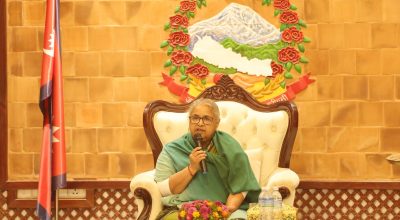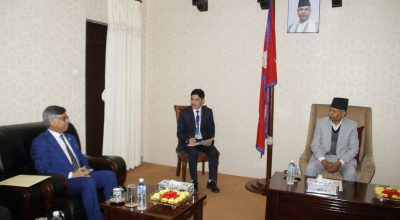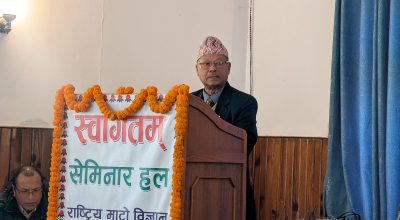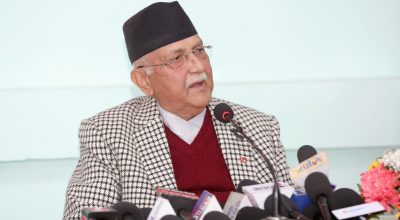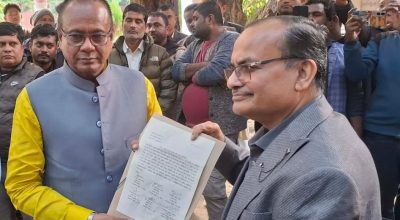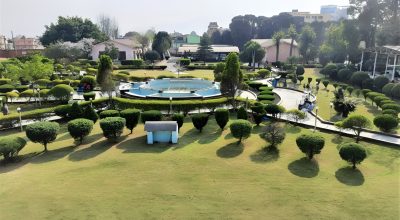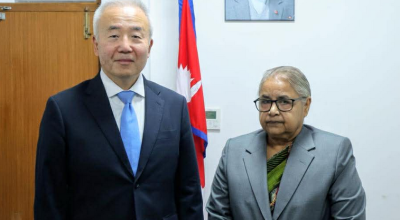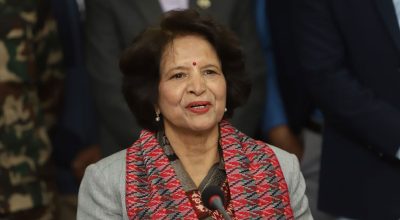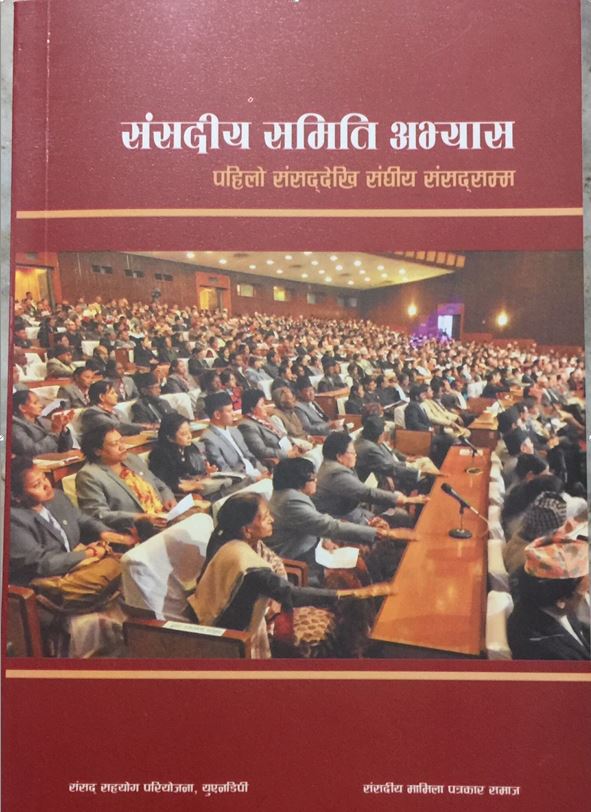
Narayan Prasad Ghimire
Kathmandu: Nepal is holding the elections to the House of Representatives and Provincial Assembly after a week- November 20- the second after the country got a new constitution in 2072 BS.
As a result, the political parties, leaders, cadres, candidates and their well-wishers are engrossed on the election campaigning across the country. The political leaders and candidates are making promises and sharing development dreams before the voters.
One of the common views they have is- they will make good policy and laws for development and prosperity if elected. They are requesting and urging the people for their votes to be parliamentarians. We need to wait some more weeks whether they best utilize the parliament to be formed after the November 20 elections and work really for the people and country.
In a multi-party democracy, election and parliament are essential systems. Nepal has practiced parliamentary system for six decades, but with disruption and unease time and again. We got the first parliament in 2015 BS which elected BP Koirala as the first people elected Prime Minister in Nepal. The book under review, “Parliamentary Committee Practices: First Parliament to Federal Parliament” looks into the parliamentary system of Nepal, focusing more on parliament committees, which are also called the ‘workshop of the parliament’.
The parliament committees are formed to study any issue thoroughly and assist the parliament in making its stand clear on it. In Nepal too, the thorny issues surfaced in the parliament are taken to the related parliament committees for discussion and consultation with experts, stakeholders and in-depth study. The committees and even the sub-committees formed under the parliament are for strengthening the parliament. An informed and robust parliament is pre-requisite to making effective laws that address the pressing issues in the country. The book dwells well on how the parliament committees were formed and whether they worked effectively.
Just a decade had passed since Nepal got democracy, it witnessed tumultuous political development caused by the royal coup in 2017 BS. It nipped in the bud the parliament, which lasted not more than one and half year. The parliament formed after the first people’s election had formed committees, but in vain.
The party-less system took a toll for 30 years, thereby causing severe dent in Nepal’s parliamentary committee practice. Referencing the information available at the Parliament Secretariat, the book mentioned that ‘the House of Representatives Regulation-2016BS had provisioned advisory committee, supreme committee, application filing committee, public account committee, estimate committee and prerogatives committee.’ Five committees were formed to study birta elimination bill, aquatic conservation bill, alcohol bill, parliament’s privileges bill, and a mobile court bill.
The concerned ministers had presented separate reports of the committees, the book mentioned. It reflects that the lawmakers were keen to discuss the burning issues of the time. Effort to make aquatic conservation bill at that time indicates how sensitive Nepal was for protection of biodiversity. It was indeed a democratic exercise.
Although it was party-less panchayat system after 2017BS, there was unicameral parliament called ‘Rastriya Panchayat’. It also formed the parliament committees, including accounts committee, and estimate committee. However, Rastriya Panchayat was all guided to fulfill the vested interest of the royals and their near ones. Despite the formation of the parliament committees, they were not allowed to dwell on governance agenda in the beginning of the panchayat system. Later, half dozens of thematic committees were also formed.
Similarly, seven parliament committees were formed after the establishment of government since restoration of democracy in 2046BS. The parliament formed after the 2051BS election added two more committees. These were under the lower House- House of Representatives. There were two committees under the Upper House in 2048BS, and four committees under the Upper House in 2051BS. Common among them were, remote region committee, and delegation and government assurance committee.
There were thematic committees in the restored parliament with 2062/63BS people’s movement, interim parliament, constituent assembly-I and constituent assembly-II. A new practice of parliamentary hearing committee was adopted after the second amendment of Interim Constitution, 2063BS. Both the first and second Constituent Assembly also functioned as parliament. There were eight thematic committees, two special committees and six other committees under the first CA (parliament). The formation of these committees was inclusive reflecting the spirit of the second people’s movement and the Interim Constitution.
The Second CA however witnessed comparatively fewer presence of women in its committees. There were only two committees out of 12 headed by women lawmakers in the CA-II. Again, after the promulgation of constitution in 2072BS, women chairmanship of parliamentary committee was on rise. The women lawmakers heading the parliamentary committees under the House of Representatives Nepal got with first election since the promulgation of constitution-2072 were Pabitra Niraula Kharel, Purna Kumari Subedi, Nirudevi Pal, Sashi Shrestha, Kalyani Kumari Khadka, Jaypuri Gharti, Nira Devi Jairu. Similarly, Dilkumari Rawal Thapa (Parbati) headed a parliamentary committee under the National Assembly.
While reading the book, the ‘account committee’ is in practice since origin of parliament. It has dealt important issues that kept tab on the government activities. The book has hailed the committee as the body making a ‘history.’ The Dhamija scam was one of the burning problems the committee had pointed before the parliament, people and government. As the government led by then Girija Prasad Koirala in 2048BS took a non-transparent way to pick an agent for RNAC- Dinesh Dhamija- it had created furor. Interestingly, Koirala dissolved the parliament in 2051BS while the debate on Dhamija was on its peak. As per observer, this scam tarnished the image of Nepali Congress.
Similarly, the book has mentioned other scams that were raised by different parliamentary committees. One of the unforgetting ones was the investigation done by the State Affairs Committee which ultimately led the former Inspector Generals of Nepal Police behind the bar. Yes, it was Sudan Scam. The State Affairs Committee had found with investigation that millions of rupees were embezzled while purchasing armed personnel carrier (APC) to the police persons deployed in Darfur of Sudan under the UN peacekeeping mission.
In addition to this, the book has explained how different parliamentary committees were involved in the same case, thereby overlapping jurisdiction and wasting time. Similarly, furnishing impractical direction by the committee is equally worrying.
For example, when the country was gripped by COVID-19, the law, justice and human rights committee directed the government to immediately arrange 10,000 ventilators and ICU beds in the wake of rising cases of coronavirus infection. This direction was beyond the State capacity to cope with crises.
However, the government’s apathy to implement committee’s direction is also worth noting. In case of Kathmandu-Tarai fast-track, the government repeatedly ignored committees’ recommendation. Although the parliament committees’ investigation and study are for making government accountable to parliament, and parliament to people, some decisions of the committee were impractical. It is finely depicted in the book. The stories brought forth by the book also show how some executives- prime ministers- ignored the parliament committees. Despite the call by parliament committees, failure to appear can be interpreted as denigrating the value of parliament in democracy.
The book has been divided into five chapters- evolution of parliamentary committee, parliamentary monitoring: committee in perspective of effectiveness, women in parliament: women presence growing in committee leaderships, parliamentary oversight and challenges of the implementation of committee directives, and what experts say.
The book can be a mirror to study Nepal’s parliament system and effectiveness of parliamentary committees. A further research and study can be done based on it. The extensive references and footnotes have substantiated the points made by the writer. At the same time, it can be taken as a comprehensive note on parliamentary committee practices in Nepal.
However, while reading, curiosity drives what had the parliamentary committees in the BP Koirala-led government furnished recommendations on various bills. The book fails to mention, possibly because of the lack of related archive and documentation. It is worrying that Nepal’s historic archives are not available to study thoroughly.
At a time when Nepal is holding election for the new parliament- second time after it got the new constitution, the book certainly is a worth reading text. The book, published by the Journalists Society for Parliamentary Affairs in Nepali language, is edited by journalist Thir Lal Bhusal. It is published with the support of Parliamentary Support Project of the UNDP. Undoubtedly, it is an important contribution to the institutional documentation of parliamentary affairs, especially the committees in Nepal. RSS





